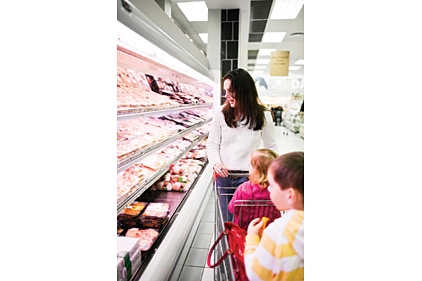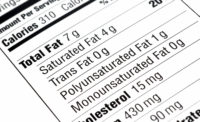Information Resources, Inc., a Chicago-based market research firm, conducted extensive research into the daily eating habits of Americans and found that the age-old image of a family seated around the dining room table enjoying a home-cooked meal is falling by the wayside.
While 79% of Americans are planners and eat three “square meals” or several “mini meals” throughout the day, a new segment is emerging—consumers who eat on the run.
Dubbed “opportunists,” these eaters represent a whopping 21% of Americans and tend to grab food and drink throughout the day as the opportunity arises, with little consideration as to whether they are eating a meal or a snack. The study, “How America Eats: Capturing Growth with Food on the Run,” compares opportunists to planners and outlines strategic approaches for consumer packaged goods marketers to win their share of this $90 billion market.
“The eating habits and attitudes of traditional three-square-meals-a-day eaters have been studied extensively for years,” says Susan Viamari, editor of the IRI study. “While this segment is still important, you simply cannot deny the emergence of this new on-the-go eating segment. Since very little has been uncovered about these eaters, we are addressing how this group’s demographic, lifestyle and attitudinal characteristics impact their food and beverage shopping, buying and consumption behavior. CPG marketers who truly understand this emerging and growing segment at a finite level and serve them well stand to reap disproportionate growth in the years to come.”
Profiling opportunist eaters
Opportunist eaters hail from diverse backgrounds, cutting across age, income and household brackets. Two-thirds of opportunists are female, and 92% are of non-Hispanic origin. Skewing slightly to the lower end of the income spectrum, nearly two-thirds of opportunists come from single-member or 2-member households. Many are living a bachelor/bachelorette life, or the life of a dual-income-no-kid family, where life is a bit less scheduled. Just under half of these eaters are under the age of 45.
So, how do opportunists eat compare to planners? Both segments follow a “moderation is key” approach to healthy eating, but planners are more inclined than their on-the-go counterparts to factor healthy eating into their daily regimen. For instance, 36% of opportunists vs. 31% of planners split their healthy and indulgent behaviors equally, eating healthy half the time and eating more freely the rest of the time. In addition, opportunists take a more laid-back approach to exercising than planners. Nearly half (45%) exercise less than two times a week. In contrast, three-quarters of planners are active for at least 20 minutes on a daily basis.
Balancing the value equation
The first step in winning with opportunist eaters is to understand their value equation. While price is a significant consideration for a vast majority of U.S. consumers, it carries more weight in the value equation among opportunist eaters. For example, 31% of opportunists tend to buy whatever food/beverage is on sale with little concern for nutritional value. This compares to 18% of planners. Likewise, available coupons/discounts are a key influencer of meal/snack decisions for one-third of opportunists vs. about one-quarter of planners.
Not surprisingly, different consumer groups choose and shop the various CPG channels differently to find the best value. A higher-than-average share of opportunists have been turning to value channels to stretch their budgets. The dollar channel’s focus on providing value and convenience has served them well with on-the-go eaters. For example, Family Dollar’s positioning as a “neighborhood convenience discount store,” similar to Dollar General’s “small-box discount retailer” are hitting the right note. However, Kroger is fighting back with its Refresh program that includes price reductions across many high-turn products. Meanwhile, Walmart escalated its Neighborhood Market. Retailers must continue developing these types of programs as they heighten their focus value to protect and grow share.
Cranking up on-the-go options
Thirty-nine percent of opportunist eaters grab convenient foods with little thought as to whether those foods are playing the role of a snack or meal. They do this with nearly triple the frequency of their planner counterparts. This is not to say that opportunists do not enjoy cooking. Even though they under-index in this area compared to planners, 49% do like to cook but look for convenience when evaluating their food and beverage options. Two-thirds want foods that are quick and easy to prepare, and one-third prefer to eat heat-and-eat or ready-to-eat foods rather than preparing options from scratch.
As a result, opportunists spent 60% more on frozen appetizers, snack rolls vs. planners during the past year, and the category grew by 5% among opportunist eaters. In 2013-2015, frozen appetizers and snack rolls, as well as a variety of other convenience-oriented CPG categories, are expected to continue demonstrating higher-than-average growth among opportunist eaters vs. the market as a whole. Capturing just a small share of this opportunity will add appreciably to the bottom line.
Winning with opportunist eaters
With 66 million opportunist eaters in America today, CPG marketers must look beyond the confines of the retail store and rethink the competitive landscape by viewing all eating and drinking occasions as opportunities to engage shoppers and win share of stomach, not just home-based occasions. The following provides a framework to win share of America’s eating and drinking occasions across all dayparts as well as protect and grow share among the country’s sizeable population of opportunist eaters:
• Market analytics. Invest in market analytics that enable a rigorous evaluation of market potential.
• Product performance. Uncover new opportunities with granular analyses of product performance and “what-if” scenarios.
• Predictive modeling. Leverage predictive modeling to estimate the value of new growth opportunities.
“IRI’s ongoing analyses of changing consumer eating behaviors point to new and evolving opportunities for CPG marketers,” adds Viamari. “But, the only constant is change. The demographic composition of American eaters has and will continue to change, so CPG marketers must stay on top of the evolution of the country’s emerging demographic and lifestyle segments to get ahead of the opportunities.”
Digging deeper into how America eats
In addition to the new research on opportunist eaters, IRI also just released a new segmentation, NutriLink, which breaks U.S. consumers into six distinct groups, including fast frugal, wise and healthy, carefree coaster, healthy chic, sensible supermom and convenient and content, based on their eating habits and attitudes, food and beverage selection criteria and the impact of the economy on how they shop for and consume packaged food and beverages. This segmentation will assist marketers as they develop new product, promotion, merchandising, pricing and store layout strategies designed to cater to key audiences. And, with this information appended to IRI Consumer Network panel, it provides an opportunity to benchmark current performance over time.

